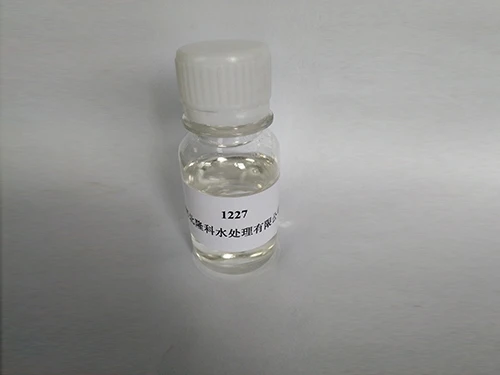Exploring the Applications and Benefits of Poly Aluminium Compounds in Water Treatment
Understanding Poly Aluminium Applications, Benefits, and Future Perspectives
Poly aluminium, a versatile and increasingly popular coagulant used in various water treatment processes, has gained significant attention for its effectiveness in clarifying water and removing contaminants. This compound belongs to the family of polyaluminium chlorides (PAC), which are widely utilized in the treatment of drinking water, wastewater, and even in the food industry. In this article, we will delve into the characteristics, applications, and benefits of poly aluminium, as well as consider its future in environmental management.
What is Poly Aluminium?
Poly aluminium is a type of inorganic polymer formed by the hydrolysis of aluminium salts, particularly aluminium chloride. The manufacturing process typically involves the controlled addition of hydroxide and aluminium salts, resulting in a range of poly aluminium varieties with varying properties. The most common form—Poly Aluminium Chloride (PAC)—is known for its high charge density and polymeric nature, which allows it to effectively destabilize colloidal particles in water.
Applications of Poly Aluminium
1. Water Treatment The primary application of poly aluminium is in water treatment facilities, where it serves as a coagulant. When added to water, PAC promotes the agglomeration of fine particles and pathogens, facilitating their removal through sedimentation or filtration. This process is crucial in producing potable water by enhancing the clarity and quality of the water.
2. Wastewater Treatment In industrial and municipal wastewater treatment, poly aluminium aids in the efficient removal of suspended solids, heavy metals, and organic compounds. It is particularly beneficial for treating water with high turbidity or specific pollutants, as its adjustable properties can be tailored to meet the treatment needs.
3. Paper and Pulp Industry Poly aluminium is also utilized in the paper and pulp sector. It acts as a retention aid, improving the efficiency of fiber use while enhancing the paper's strength and quality. Moreover, it assists in dewatering processes, resulting in lower energy consumption during production.
4. Food and Beverage Industry The food sector employs poly aluminium for clarification processes, especially in fruit juice and beverage production. Its effectiveness in removing haze and color from liquids makes it an attractive option to enhance product clarity and visual appeal.
Benefits of Poly Aluminium
poly aluminium

- High Efficiency One of the primary advantages of poly aluminium is its high coagulation efficiency compared to traditional coagulants like alum. This allows for lower dosages while achieving similar or enhanced water quality outcomes.
- Versatility Poly aluminium can be customized for specific applications by adjusting its chemical formulation. This adaptability makes it suitable for diverse water sources and varying contamination levels.
- Reduced Sludge Production Compared to conventional coagulants, poly aluminium generates less sludge. This not only reduces disposal costs but also minimizes the environmental impact associated with sludge management.
- Improved Settling Rates The larger flocs formed during coagulation with poly aluminium settle more quickly, thus speeding up the sedimentation process. This characteristic enhances the overall efficiency of water treatment operations.
- Reduced pH Sensitivity Poly aluminium exhibits less sensitivity to changes in pH compared to other coagulants, making it effective over a wider pH range. This quality is particularly important in fluctuating water conditions.
Future Perspectives
As the global demand for clean and safe water continues to rise, the role of poly aluminium in water treatment is expected to expand. Innovations in the formulation and manufacturing processes may lead to the development of even more effective and environmentally friendly versions of poly aluminium.
Furthermore, with increasing regulations on water quality and stricter standards for pollutants, the demand for efficient coagulants will likely drive greater research and innovation in this field. Additionally, the trend toward sustainable practices will push industries to seek greener alternatives, positioning poly aluminium favorably due to its lower environmental impact.
Conclusion
Poly aluminium has established itself as a critical component in water treatment and various industrial processes, enhancing the ability to provide clean, safe water to communities and reduce environmental impacts. Its versatility, efficiency, and adaptability ensure that it remains a vital tool in addressing the global challenges of water quality and management. As technology and research continue to evolve, poly aluminium will play an increasingly significant role in sustainable environmental practices in the years to come.
-
LK-319 Special Scale And Corrosion Inhibitor For Steel Plants: Advanced Solutions for Industrial Water SystemsNewsAug.22,2025
-
Flocculant Water Treatment: Essential Chemical Solutions for Purification ProcessesNewsAug.22,2025
-
Isothiazolinones: Versatile Microbial Control Agents for Industrial and Consumer ApplicationsNewsAug.22,2025
-
Scale Inhibitor: Key Solutions for Water System Scale PreventionNewsAug.22,2025
-
Organophosphonates: Versatile Scale Inhibitors for Industrial Water SystemsNewsAug.22,2025
-
Scale and Corrosion Inhibitor: Essential Chemical Solutions for Water System MaintenanceNewsAug.22,2025





